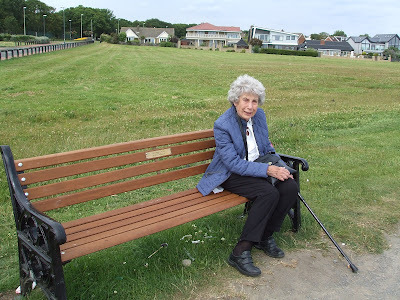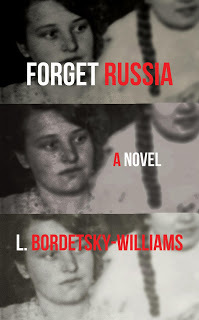Mirella Sichirollo Patzer's Blog, page 4
July 3, 2022
Alice Arden
On a cold, snowy day in February 1550, the perforated body of Thomas Arden, an insignificant, aristocratic scoundrel, was discovered in Faversham, a district of London, England. He had been stabbed at least seven times. Rumors soon emerged about an obvious culprit…Alice Arden, Thomas’ wife.
Alice had been carrying on an affair with her husband’s tailor, Richard Mosbie. The two flaunted their romance openly. Alice preferred Richard over Thomas, who she detested. The only way for her to be happy was to be rid of her husband.
First, she served him poisoned milk for breakfast. After a spoonful or two, Thomas hated the taste and refused it.
This would not be as easy as she thought. She needed help. Who better than her husband’s enemy, John Green, who had lost a precious piece of land in a dispute against Thomas? The two had even exchanged blows over it. Bent on revenge, Green was a willing accomplice. For a mere ten pounds, they hired Black Will, a soldier turned highwayman and notorious murderer to help them kill Thomas.
As he walked through the church, they tried to kill him. They laid in wait for him at various locations. They tried to access his temporary lodgings in London. One day, they tried to ambush him, but they went to the wrong place. They even tried to coerce him into a duel. All these attempts failed. Of course, they had to try again. This time, she got more help – Mosbie’s sister, their daughter, and a female servant.
She hosted a dinner party. Of course, Mosbie would be there too. When all was ready, Alice sent all the servants out of the house on various errands. Mosbie and Black Will were the first to arrive. Mosbie to his place at the table and Black Will hid in the closet. A pre-arranged phrase was agreed upon so that Will would know when to jump out of the closet. All was in place.
When Thomas arrived home, he took his place at the head of the table, his back to the closet. He and Mosbie played backgammon while waiting for dinner. Finally, Mosbie uttered the phrase. Black Will rushed out, and with a towel, strangling him while Mosbie struck him with an iron. The two men dragged their victim to another room where Black Will emptied his pockets and stripped him of his jewelry. Alice then paid Black Will the ten pounds and Mosbie and Black Will escaped on horses. To make sure her husband was dead, she stabbed Thomas many times, then set to work cleaning up the blood and mess. After discarding the knife and cloth, they were ready to receive the dinner party guests.
The guests all waited for Thomas to arrive but was late so Alice served supper. Afterwards, she entertained them with music and dancing. And still no one knew what could keep Thomas from arriving home and attending such a lavish dinner party. Feigning distraught nerves, she sent her servants to search for him, sobbing, bemoaning, wailing her worries over his absence. The guests and servants went out looking for Thomas.
Alice, her daughter, and Thomas’ sister remained. They wanted to make the murder look as if Thomas had been killed outside the home. So, the trio dressed Thomas in his nightclothes before dragging his body through the garden and a gate opened into the church yard where they left him.
Soon, Thomas’ body was discovered. Why was Thomas dressed in nightclothes on such a wintry night? Fresh snow had been trampled between the body and the Arden home, revealing the body had been dragged there.
Of course, Alice was the primary suspect. The victim’s blood, hair, knife, and cloth were soon discovered. Alice was forced to confess, naming her accomplices, and the three women were arrested. Also arrested was Mosbie who was found ‘sleeping it off’ with bloody socks at a nearby residence.
Alice was tried and found guilty of murder. She and the maid were burned at the stake.
Mosbie's sister was hanged.
Mosbie was hanged, drawn, and quartered.
Black Will went on the run for several years. But he too, was caught and hanged, drawn, and quartered.
But their legend lives on…
Alice cursed Thomas bitterly, that the world might wonder on him.
And no grass would ever grow on the spot where Thomas Arden’s body was found.








June 25, 2022
Anna Vieti - Pictures of Anna - A Novel by Sam Martin
Pictures of Anna
A Novel
by
Sam Martin
Anna Vieti was a German of Roma/gypsy origin who worked for two Jewish doctors in Hamburg. In the mid 1930s, after the persecution & extermination of Jews and gypsies had begun in Germany, the two doctors managed to flee to the UK and promised Anna that once they’d settled there, and as soon as they could sort out the paperwork for her, they would send for her and she could once again work for them in England, where they had set up their practice - and in 1938 Anna arrived in the UK.
This is where the story becomes personal and how I got to know it, because my aunt also worked for the two doctors and she was given the task of looking after Anna and helping her to settle in the UK, as she’d arrived unable to speak a word of English and she had no money at all in her purse, and very few personal belongings.
After some time she met Guy, who himself had dual German / British nationality - and in 1940 they became engaged.
My story begins on Anna’s wedding day, May the 26th, 1940, which was also the day that the British Parliament approved the so-called Defence Regulation 18B, which allowed the authorities to round up and detain without trail or sentence any individuals who they deemed to be “enemies of the State” - and on his wedding day, with Anna waiting patiently at the altar for him, Guy received a visit from the local police who took him away without explanation or reason, and he was incarcerated in the local prison, without knowing why and without knowing for how long. It was the UK’s policy at the time of “lock up first, think about it later”.
Anna engaged a lawyer to try and free Guy, but against the backdrop of a country at war ( & losing), and the growing hostility towards “the enemy”, all efforts were in vain.
But Anna didn’t only escape the camps and certain death at the hands of the Nazis when she came to Britain, she also fled from a bleaker-than-bleak family background of violence and abuse towards her which manifested as a morbid fear of being locked up - the legacy of being thrown into a freezing cold, pitch-black cellar no bigger than a dog kennel for days on end. This fear of being incarcerated herself came back to haunt her in Britain only days after Guy had been imprisoned when the British government declared that ALL enemy aliens were to be interned.
So Anna went on the run, trying to avoid imprisonment herself, and found sanctuary with a Swiss artist.
The authorities however - specifically MI5, whose leadership became increasingly paranoid about the presence of any enemy aliens at large in the country - were determined to track down all and every German, Austrian, Italian etc who had thus-far evaded them.
Pictures Of Anna is a document - but not a documentary - about Anna’s fate and her attempts to avoid imprisonment, which she knew would “kill her” inside. It is about history - about politics - but mostly about one young woman's fight to find freedom in the world, at a time when the forces lined up against her had never been so mighty nor so formidable. In Germany she was up against the Nazis (because of her race) - in the UK her foe was the government and the military (because of her passport) - and at 'home' in Hamburg she was the enemy of a vicious and vindictive family.
'POA' is a story about a never-before episode in both British and German history which – until my novel was published – had never before been told in popular culture i.e. not in literature nor film, which offers us a way of looking at our world through a window to the past.
-------------------
I met Anna myself on two occasions, but that was long before I knew her story. My aunt always used to say “someone should write a book about Anna’s life” and - at the ripe old age of 80-plus - my aunt, still a close friend of Anna’s right up to her death, decided to do an A-level in German at the local college in the UK and one of the exercises she was given was to “write a short essay in German, either about someone famous, or about someone who you know who has had an interesting life.” So Joan, my aunt, wrote about Anna and sent it to me in Germany for my wife (Jutta was German) to read through and check for grammar, expression etc. I too read it and thought directly “this without any doubt is a screenplay – I knew immediately that I was sitting on something special, something explosive - (** I am a screenwriter) - and began to write a script based on Anna’s story but using the character I’d discovered when researching for another project about looted Nazi art in the 1940s in Paris i.e. the French girl who had tried to save her Jewish artist/boyfriend from being deported to the death camps by “befriending” the SS officer who was in charge of the paintings’ distribution. That SS officer happened to be my neighbour’s father when we lived down on Lake Konstanz in southern Germany.
My screenplay turned into a novel along the way, although it is also an ongoing movie project - a German-UK co-production.
----------------------------
Why did it become a novel? That was my gift to my late-wife – or maybe it was her gift to me... I’ll never work that one out. When she was diagnosed with ALS/motor neuron disease she began to write Anna’s story herself – but after just six pages in, her only good hand began to weaken badly and then pack up altogether and she realised that she couldn’t type anymore, and “spelling” it out with her eye-controlled speech computer would have taken her 100 years to complete. She didn’t even get 100 weeks.
I cared for her right up to the bitter end... and the end, believe me, it was more than bitter. But we did a deal. She gave me an hour-and-a-half every day in order to vanish into my office – to vanish into Anna’s world and into Anna’s story – and write the novel. I wrote it, she read it, she cried. And she said I’d done a special story justice. And that – really, just those words alone – that was enough for me.
But she is a big, big part of this because I told her to put together something for the front cover. She was extremely restricted by that time – almost in a “vegetable state” – but by using her eyes only she designed the front cover (she was a good painter and could actually paint using her eyes and some amazing Spanish software that a friend discovered for her).
As I said, the above is only perhaps 1 percent of what I could tell you about the project, which has taken me to Berlin, to London, to Hamburg, to Vienna, and has allowed me to meet and work with some of the biggest names in the film industry.
Finally I’ll give a big shout-out and a heartfelt “thank you” to Sandra David, my publisher at Arrow Gate Publishing in London. I’d turned down three previous offers to publish the novel because I wanted to keep the movie Rights – or the majority share of them – because Pictures Of Anna was also a movie project and it was imperative that it continued. The first three publishers rejected my request and I thought “Sam, you idiot, you’ve really blown it now”. Then came the call from Sandra.
I should say “thanks” too to the ones who turned me and my request down because Sandra David has been a rock, an absolute hero for me and no words can express my gratitude for taking the chance and for her support. She called me the day that Jutta died and she cried and cried – we both wanted so much for the book to come out while Jutta could share in its success. I another lifetime maybe... another fairer lifetime.
I am donating whatever Pictures Of Anna earns for me to the ALS/mnd research guys. I’ll never see a cure for the worst of all illnesses in my lifetime, but if in 100 years from now someone can be cured and someone doesn’t have to go through what my poor wife went through... just to know that maybe... just maybe.. that I’ve made a contribution – that’s enough for me. But that isn’t all. I’d also like Arrow Gate to get their reward too. I’d love, just love, Sandra David to get her fair share of its success too. She really does deserve that much, because a better person in this world for a project like Pictures Of Anna... well, I’m pretty sure that person doesn’t exist.
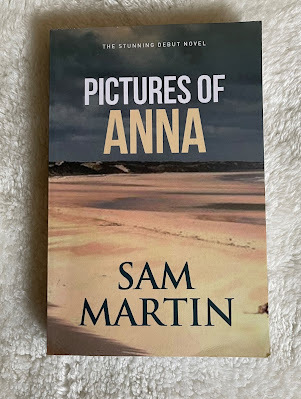
Where can you buy the book? Obviously all the big book retailers, or via the publishers:
https://arrowgatepublishing.com/product/pictures-of-anna/
https://www.waterstones.com/book/pictures-of-anna/sam-martin/9781913142063








May 9, 2022
Susanna Hall (Shakespeare's eldest daughter)
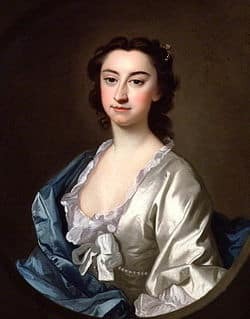
Susanna Hall was the eldest child of William Shakespeare. She was baptized on 26th May 1583 at Holy Trinity church in Stratford upon Avon. She had two younger siblings – twins Hamnet and Judith – and was raised in the family home owned on Henley Street, owned by her grandfather, John Shakespeare. It was a crowded house when she was little, containing both her paternal grandparents, her mother and siblings, and several of her father’s younger siblings as well.
While it is unlikely she had any formal education, which was reserved for male children at the time, Susanna did learn to read and write, possibly taught by her parents or by one of her younger uncles who were not too far from her in age.
In 1607, at the age of 24, Susanna married a newcomer to Stratford, the 32-year-old physician and Puritan, John Hall. They had one child, Elizabeth, born in 1608. John Hall had a successful practice, ministering to the local gentry. Some of his case notes were published after his death in 1635, shedding valuable insight on medical practices in the seventeenth century, and they include a description of his wife’s illness and the treatments he prescribed.
When Susanna was a young wife and mother, in June 1613 a young man, John Lane, accused Susanna of adultery with a local haberdasher, Rafe Smith, and claimed she had caught a venereal disease from Smith. It turned out however that Lane held a grudge against John Hall for his support of a Puritan minister at Holy Trinity church and sought to hurt him through attacking his wife. Hall sued him for slander and, when Lane didn’t appear in court, won. History doesn’t record Susanna’s thoughts and feelings on the slander.
Shakespeare made John Hall the executor of his will and left the bulk of his estate to Susanna Hall when he died in 1616. This included two houses on Henley Street, several pieces of land around Stratford, and New Place, one of the oldest and largest houses in Stratford, where Shakespeare and his wife lived. The Halls subsequently moved in with Susanna’s widowed mother.
In 1643, at the height of the English Civil War, Queen Henrietta Maria, wife of King Charles I, stayed with Susanna at New Place for three days. The town hall in Stratford had been blown up a few months earlier and tensions were running high. It is said that she brought a thousand horses and a hundred wagons. One can only imagine the conversation between the young queen, a French woman and a Catholic, and Susanna, herself English, Puritan and citizen of a town that was firmly against the King.
Susanna died on July 11, 1649, at the age of 66 and was buried in Holy Trinity Church beside her parents. The epitaph below was likely written by her daughter, Elizabeth.
Witty above her sex, but that’s not all,Wise to salvation was good Mistress Hall.
Something of Shakespeare was in that, but this
Wholly of him with whom she’s now in blisse.
Then, passenger, hast nere a tear
To weep with her that wept with all
That wept, yet set herself to chere
Them up with comforts cordiall?
Her love shall live, her mercy spread
When thou hast nerre a tear to shed.
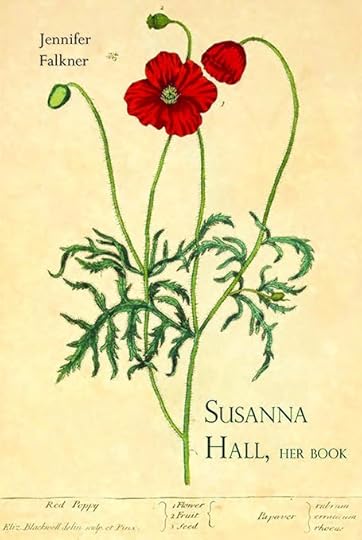
Jennifer Falkner (she/her) is an award-winning short story writer living in Ottawa, Canada, on the traditional, unceded territory of the Algonquin Anishinaabeg First Nation. The novella, Susanna Hall, Her Book, is published by Fish Gotta Swim Editions.
To order, please visit: https://www.fishgottaswimeditions.com/books-1








July 28, 2021
Sirma Voivode - A woman warrior who led a mountain gang while dressed as a man
Sirma voivode - a warrior who led her own mountain gang, while dressed as a man
[image error]Sirma Strezova Krasteva was born in a small village in the Shar mountain, which was terrorized by Albanian outlaws. One day, the outlaws kidnapped her best friend Ruzha to bring her to their leader - Hamza Bei. Fed up with their cruelty, Sirma decided to strike the outlaws back.
She dressed up like a man and joined the Haiduks - a gang of Slavic peasants aiming to protect their villages from assaults. Once there, she not only earned the respect of her comrades, but they also choose her by vote to be their gang leader. Thus, she turned into Sirma voivode (voivode means leader). And she was only 18.
For 24 years her gang roamed the mountain, protecting the defenseless mountain villages and waging war on Hamza Bei and his underlings. With time, Sirma's group reached 72 loyal comrades, and it took a long time until they realized she was a woman.
Living in the mountain wilderness was tough, especially when they had frequent battles to the death with their enemies. Eventually, Sirma and her gang killed Hamza Bei and ended his reign of terror.
After that, Sirma retired and went back to living the domestic life of a housewife. She married Velko Spirov - her second in command, whom she fell in love with in the midst of their dangerous adventure. Sirma lived to the old age of 88 when she was shot dead by the side of the road by an old enemy.
During that time of history in Eastern Europe, there were lots of Haiduk gangs across the Ottoman Empire. Haiduk literally means "outlaw", that's how the Ottomans called the Slavic mountain gangs and frequently hunted them down and executed them. Most Haiduks were men, but there were also many women among them.
Sirma voivode's story is especially successful because not only did she defeat her enemy, but she could also retire and enjoy the peace she fought for.

Purchase on Amazon
About the Author
Reni Stankova
Reni Stankova is a book author, a tired office worker, and a nature lover who enjoys going on mountain treks. She lives in Bulgaria. In her free time, she writes about feisty characters, steamy chemistry, and edge-of-your-seat action scenes. In 2019, she self-published the historical fiction novel Sirma.
Website link: https://www.renistankova.com/Goodreads: https://www.goodreads.com/author/show/19105728.Reni_Stankova








Sirma voivode - A woman warrior who led a mountain gang while dressed as a man
Sirma voivode - a warrior who led her own mountain gang, while dressed as a man
[image error]Sirma Strezova Krasteva was born in a small village in the Shar mountain, which was terrorized by Albanian outlaws. One day, the outlaws kidnapped her best friend Ruzha to bring her to their leader - Hamza Bei. Fed up with their cruelty, Sirma decided to strike the outlaws back.
She dressed up like a man and joined the Haiduks - a gang of Slavic peasants aiming to protect their villages from assaults. Once there, she not only earned the respect of her comrades, but they also choose her by vote to be their gang leader. Thus, she turned into Sirma voivode (voivode means leader). And she was only 18.
For 24 years her gang roamed the mountain, protecting the defenseless mountain villages and waging war on Hamza Bei and his underlings. With time, Sirma's group reached 72 loyal comrades, and it took a long time until they realized she was a woman.
Living in the mountain wilderness was tough, especially when they had frequent battles to the death with their enemies. Eventually, Sirma and her gang killed Hamza Bei and ended his reign of terror.
After that, Sirma retired and went back to living the domestic life of a housewife. She married Velko Spirov - her second in command, whom she fell in love with in the midst of their dangerous adventure. Sirma lived to the old age of 88 when she was shot dead by the side of the road by an old enemy.
During that time of history in Eastern Europe, there were lots of Haiduk gangs across the Ottoman Empire. Haiduk literally means "outlaw", that's how the Ottomans called the Slavic mountain gangs and frequently hunted them down and executed them. Most Haiduks were men, but there were also many women among them.
Sirma voivode's story is especially successful because not only did she defeat her enemy, but she could also retire and enjoy the peace she fought for.

Purchase on Amazon
About the Author
Reni Stankova
Reni Stankova is a book author, a tired office worker, and a nature lover who enjoys going on mountain treks. She lives in Bulgaria. In her free time, she writes about feisty characters, steamy chemistry, and edge-of-your-seat action scenes. In 2019, she self-published the historical fiction novel Sirma.
Website link: https://www.renistankova.com/Goodreads: https://www.goodreads.com/author/show/19105728.Reni_Stankova









April 28, 2021
Sarah Bordetsky - Forget Russia
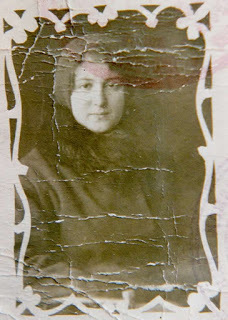
Many families have an unlikely hero—someone who quietly saves the family, so quietly that perhaps most in the family don’t even know the story of her courage. Sarah Bordetsky, born in 1906, in the small Jewish shtetl of Gornostaypol, Ukraine, was one such person. She suffered tragedy at a young age—when she was around fourteen years old her mother Zlata was raped and murdered in a pogrom in 1921. The Ukraine was an extremely unstable place to be after the 1917 Revolution since the Civil War was fought there. For a while the Bolsheviks lost control of the Ukraine and warring factions of Ukrainian Nationalists and other factions opposed to the Bolsheviks vied for power and control. In 1921, when the Bolsheviks were able to vanquish the White army and its many factions, the defeated armies, as they retreated went into the Jewish shtetls, murdering and pillaging anyone they could find. Sarah’s mother, Zlata Oushomirsky, lost her life during one of these pogroms.
Sarah’s father, Lazer Oushomirsky, had already deserted the family. Years before, he had left for the US, and remade himself as Louis Shumer, an elegant and talented tailor. He had promised to send for his wife and daughter as soon as he could, but instead, years later, he mailed Zlata a letter of divorce and a five-dollar bill. After her mother’s brutal murder, Sarah must have felt like an orphan. An uncle who owned a store took her in and tried to locate her father in America. Eventually, Sarah’s uncle found him, and she journeyed alone on the SS Samaria ship to her father in Boston. In recounting her journey, many years later, she said so many were sick on the boat and there were many pregnant women. When Sarah got to Boston, Massachusetts, her father had remarried, and Sarah discovered she had a half-sister and a half-brother. Her new step-mother did not welcome her. She complained she didn’t want another mouth to feed.
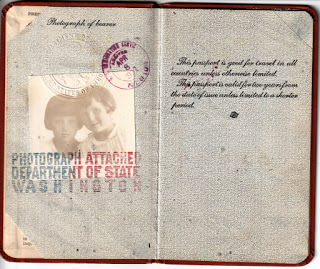
Within a year, Sarah had married Barnett or Barney Bordetsky, another Russian Jewish immigrant seventeen years older. Barney had come to America in 1909. Like Sarah, he too had a parent, his father, murdered in Russia as part of an anti-semitic hate crime. Barney was a master cabinet maker, who longed to return to the Soviet Union to build the Revolution. In 1931, at the height of Depression, he and Sarah and their two daughters, ages five and three, returned to Leningrad. Barnett was excited to be part of a Revolution that had promised equality to all. He and Sarah were part of the ten thousand Americans who went to the Soviet Union in 1931 to escape the brutal reality of the Depression. Life in Leningrad was also very harsh. Famine raged in the countryside of the Ukraine. Starving peasants filled Leningrad, seeking to escape hunger. Most people lived in communal apartments, a railroad apartment of up to twenty families, each with a room or two of their own, and all of them sharing one bathroom. Sarah, Barney, and their daughters, sick with whooping cough, only stayed in Leningrad nine months. If they had stayed any longer than a year, they would have lost their American citizenship and never gotten out. They would have surely been murdered or imprisoned during the height of Stalin’s purges in 1936 -1938, or they would have died during World War II, during the siege of Leningrad. Because of Sarah, the family returned to America before it became too late to get out of Russia.
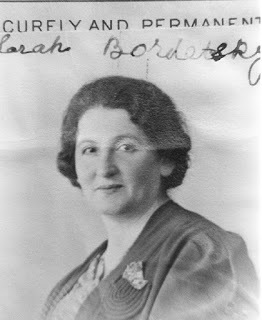
Sarah Bordetsky died in 1995. In her last years, she spent many hours humming to herself the Russian love songs from her girlhood, songs mainly of unrequited love from a country that had not been kind to her.
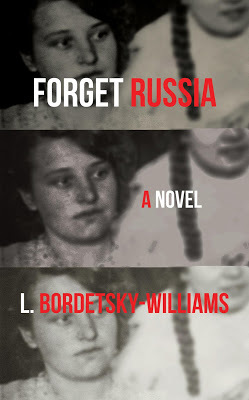
 In the historical novel, Forget Russia, author Lisa Bordetsky-Williams, explores three generations of family history—the short and tragic life of her great-grandmother, her grandparents’ journeys back and forth from Russia to America, and her own experiences in Moscow in 1980 when she met Soviet Jews, many of them Refuseniks, whose grandparents had been Bolshevik leaders and sympathizers, murdered or imprisoned by Stalin. Forget Russia explores the interlocking connections between people across three generations, across space and time. It looks at the nature of destiny and the ways women in a family seek to transcend inherited trauma.
In the historical novel, Forget Russia, author Lisa Bordetsky-Williams, explores three generations of family history—the short and tragic life of her great-grandmother, her grandparents’ journeys back and forth from Russia to America, and her own experiences in Moscow in 1980 when she met Soviet Jews, many of them Refuseniks, whose grandparents had been Bolshevik leaders and sympathizers, murdered or imprisoned by Stalin. Forget Russia explores the interlocking connections between people across three generations, across space and time. It looks at the nature of destiny and the ways women in a family seek to transcend inherited trauma. LINKS
Book website
Book trailer
https://www.youtube.com/watch?v=eDICgOz-Kqo&t=3s
Facebook
https://www.facebook.com/ForgetRussia
Twitter
https://twitter.com/BordetskyL
Instagram
https://www.instagram.com/forgetrussia/?hl=en
Amazon
Bookshop
https://bookshop.org/books/forget-russia/9781732848047
B&N
https://www.barnesandnoble.com/w/forget-russia-l-bordetsky-williams/1137552610?ean=9781732848047









April 11, 2021
Mary Perkins Olmstead - Landscape of a Marriage
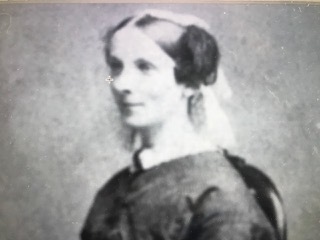
Mary Perkins Olmsted was born on March 26, 1830. Orphaned at the age of eight, she was raised by her grandparents on Staten Island. As a young girl, she loved to play the piano and sing. When she was 21, she married Dr. John Olmsted. They honeymooned in Italy and over the next five years, she gave birth to three children while living in Europe. John died at the age of 32 from complications from tuberculosis and Mary returned to New York with her children. A year later, she agreed to marry her brother-in-law Frederick Law Olmsted in order to provide a secure future for her family.
Her new husband was involved in a plan to turn 800 acres of Manhattan swamp land into a public park. Tempted to quit a number of times, it was Mary’s wise counsel and support that kept him focused on their joint goal ‘to create a beating green heart in every urban space’. Fred and Mary had four more children, only two of whom survived infancy. Fred’s career as a landscape architect took him away from the family for long periods of time as he worked on projects including Boston’s Emerald Necklace, the Biltmore Estate in Asheville, NC, the grounds for the Chicago World’s Fair, the park spaces at Niagara Falls and Yosemite National Park, as well as dozens of urban parks, college campuses and private estates.
More than her husband’s greatest fan, Mary organized the firm’s business operations, fine-tuned many of the design projects (as many as 50 different projects were on the books at any one time), paid the bills and kept track of the company’s finances.
After Fred died in 1903, Mary became more involved in philanthropic activities, leaving the Olmsted Brothers’ operations in the capable hands of her sons John and Rick.
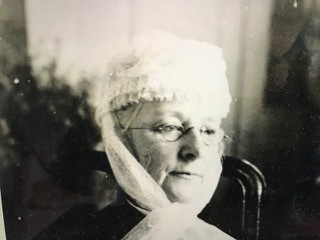
She died on August 23, 1921at the age of 91, surrounded by her children and grandchildren.
Mary's life story has been immortalized in the novel, Landscape of a Marriage, written by Gail Ward Olmsted, a distant relative of Mary.

AuthorGail Ward Olmsted

Gail Ward Olmsted was a marketing executive and a college professor before she began writing fiction on a full time basis. A trip to Sedona, AZ inspired her first novel Jeep Tour. Three more novels followed before she began Landscape of a Marriage, a biographical work of fiction featuring landscape architect Frederick Law Olmsted, a distant cousin of her husband’s, and his wife Mary.
For more information, please visit her on Facebook and at GailOlmsted.com.
Website: www.GailOlmsted.com
www.facebook.com/gailolmstedauthor
Email gwolmsted@gmail.com
www.amazon.com/author/gailolmsted
https://www.goodreads.com/author/show/8158738.Gail_Ward_Olmsted
Pre-order links:
Amazon
Black Rose Writing
https://www.blackrosewriting.com/literary/landscapeofamarriage
Save with code: PREORDER2021
Barnes & Noble









August 30, 2020
Boudicca - Rage Against the Dying Light
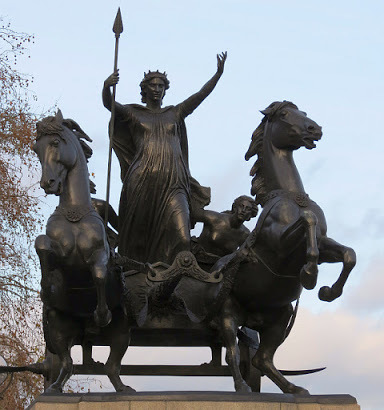
Boudicca was born in around 25 A.C.E. The only known writings about her are the following. We have The Annals of Tacitus written about fifty years after her death which covers in a few paragraphs her uprising and battles against the Roman invaders of her beloved British isle. She is also mentioned in a history of Rome written one hundred years after her death by Cassius Dio. Both are accounts written only about her battles against the Roman invaders. Those accounts also include the battles between Venutius a foster prince of a Celtic tribe and Cartimandua, the vicious queen of a large Celtic tribe who married Venutius and then betrayed him. Both were her contemporaries. Both accounts are written from the Roman point of view.
Boudicca was married to Prasutagus a much older king of a large and wealthy British Celtic tribe the Iceni in a politically matched marriage. When Romans invaded Briton Prasutagus made a pact with the Romans to lay down all tribal arms and only use them in defense of the Romans in return for a pact that would save his people and his wealth. When Prasutagus died the Romans broke that pact overrunning the Iceni palace, taking slaves, publicly flogging Boudicca now queen of the Iceni and assaulting her two young daughters.
Boudicca enlisted thousands of Celtic warriors to lead them into battle with her two young daughters beside her in a chariot to avenge their assaults upon her daughters and upon herself and free her beloved isle from Roman tyranny. Her epic battles are the most celebrated in Celtic history making her the first known woman warrior.
Many poems have been written about her and many paintings have celebrated her courage, along with a statue to her memory that overlooks the Thames in London with Big Ben in the background. A rehab facility for women army veterans from the Iraq war considers her their inspiration and patron.
There are still many groups around the world who meet and celebrate her memory and her courage as well as a Facebook site which features her that has had millions of hits.
Written by Jan Surasky
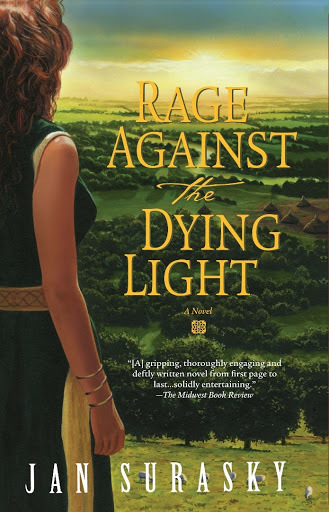
Of all the women warriors in myth and legend few are more storied than Boudicca, the fierce redheaded queen who, in the first century A.C. E. led the most celebrated Celtic rebellion in history. Until now books about her have been based on the only written records that exist—ancient Roman writings. But, Rage Against the Dying Light tells the story from the Celtic point of view.
At first a carefree young princess who revels in friendships and the beauty of her land, Boudicca learns the ways and rites of her Druid tribe. She prepares for the day she will be queen, wife and mother. Soon after her politically matched marriage to the much older king of a large and wealthy tribe, however, her world turns dark. After the death of her husband Roman invaders intent on conquering the loosely allied Celts attack the palace breaking a pact that would have saved the tribe from doom, taking slaves, publicly humiliating Boudicca and assaulting her two young daughters.
Betrayed and outraged Boudicca does not back down. She nurses her daughters back to health and with them beside her in a chariot she leads thousands of warriors in an epic battle to avenge her daughters and rid her beloved homeland of Roman tyranny.
Rage Against the Dying Light is the story of history’s first woman warrior and a symbol of courage inspiring paintings, poetry and a statue in her honor overlooking the Thames in London.
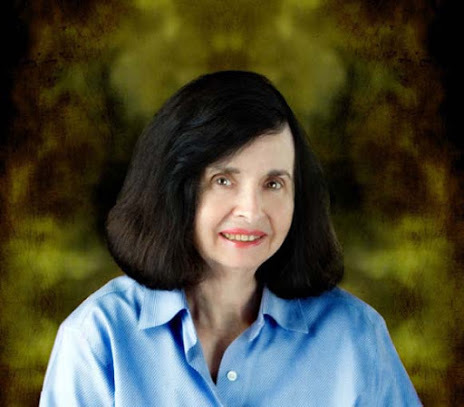
Author Jan Surasky
Multiple award-winning author Jan Surasky has worked as a book reviewer, movie reviewer and entertainment writer for a daily San Francisco newspaper. Her many articles and short stories have been published in national and regional magazines and newspapers. She has also taught writing at a literary center and a number of area colleges. She is a graduate of Cornell University with graduate courses in English literature at the University of Rochester. She lives in upstate New York. Her first novel Rage Against the Dying Light was a finalist in the Eric Hoffer Book Awards. Her website is www.jansurasky.com.









August 23, 2020
Martha Graham's Cold War
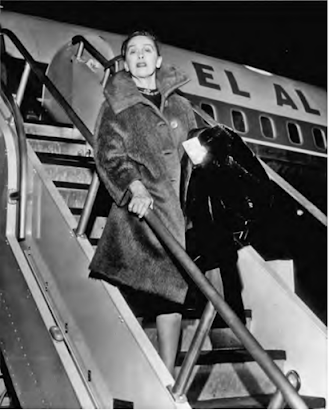 Martha Graham, sometimes referred to as the “Picasso of modern dance”, was the first dancer to perform at the White House in 1937 and travel abroad as an officially launched Cold War cultural ambassador. Representing every seated president from Dwight D. Eisenhower through Ronald Reagan, Graham performed politics in the global field for over thirty years during the Cold War, through to the fall of the Berlin Wall with a planned tour to the USSR under George H.W. Bush, which was never completed. Her contributions to US cultural diplomacy efforts and ability to forge human connections make her a fascinating figure in both political history and dance history.
Martha Graham, sometimes referred to as the “Picasso of modern dance”, was the first dancer to perform at the White House in 1937 and travel abroad as an officially launched Cold War cultural ambassador. Representing every seated president from Dwight D. Eisenhower through Ronald Reagan, Graham performed politics in the global field for over thirty years during the Cold War, through to the fall of the Berlin Wall with a planned tour to the USSR under George H.W. Bush, which was never completed. Her contributions to US cultural diplomacy efforts and ability to forge human connections make her a fascinating figure in both political history and dance history.Although Graham worked with the men in the White House, she relied on the power of the women in the wings. Starting with Eleanor Roosevelt, who invited Graham to perform for her husband and their guests and then wrote about Graham for her nationally syndicated column, to Jacqueline Kennedy Onassis, Ladybird Johnson, Betty Ford and Barbara Bush, Graham’s relationships and intimate friendships supported her diplomatic work. In addition, Graham forged great works with the financial support of female philanthropists including Bethsabée de Rothschild, Elizabeth Sprague Coolidge, and Lila Acheson Wallace. Although she defiantly proclaimed, “I am not a liberationist” and refused to participate in feminist movements, she relied on powerful women like herself.
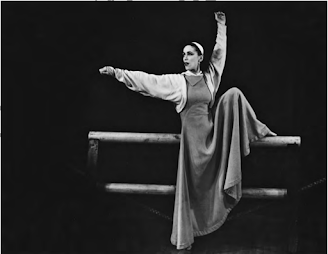
After beginning her training at the Denishawn School of Dancing and Related Arts in the 1910s and becoming integrated into the school as an instructor and then as a dancer in their touring company, she moved on to create her own foundational dance technique, which remains one of the staples of modern dance training today. Born as a product of the global modernist impulse in the early twentieth-century, Graham’s technique used the pelvic contraction – weeping,
laughing, breathing in ecstasy – as the source of all movement.
By 1926, Graham had formed her company of women, and in 1930 took center stage as
an American modernist with her piece, Lamentation. She then went on to find a distinctly
American dance, mining the power of the West with her work Frontier (1935). Along with the iconic work of what the State Department called “Americana” with Appalachian Spring, many works from the 1940s were based on Greek myths, with strong central female characters, such as Oedipus’ Jocasta in Night Journey. She expressed the deepest of human emotions and joyous love in Diversion of Angels. With this combination of works, Graham became a representative of the nation and showed its sophistication as she tapped into “hearts and minds” to win the Cold War.
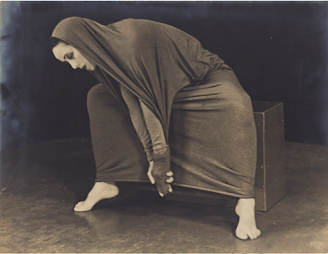
In 1956, during the Cold War, Graham embarked on the first of many international tours as a cultural ambassador for the US government. Bringing along dance works with strong themes of frontiers and classic Americana, she performed for the elite classes in “domino nations” and promoted American ideals of freedom and democracy. These works were all instilled with her unique dance form, which was completely different from the classical ballets the Soviet Union was sending for international performances. Thus, US scholars asserted that modernism could have emerged only from the “land of the free,” and not from totalitarian states such as Germany or Japan, and certainly not the Soviet Union. Although Graham herself claimed to be apolitical, she became a valuable export for US cultural diplomacy for many years.
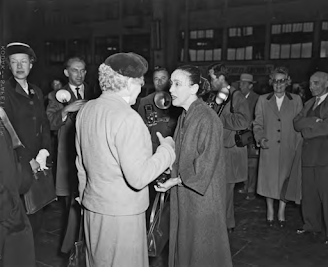
Graham continued traveling and performing for US administrations until the Cold War began to come to a close in 1989-1991. Although there was a tour planned under President Bush to the bloc nations (Poland, Yugoslavia, Czechoslovakia, Hungary, and Russia), it never came to fruition. Martha Graham passed away in 1991, the same year the Berlin Wall came down. Her legacy, nevertheless, continues today in the form of the Martha Graham Dance Company in New York City, which continues to perform Graham’s works all over the world, honoring her many contributions to modern dance and cultural diplomacy.

Amazon
The above bio on Martha Graham was written by author Victoria Phillips

https://www.victoria-phillips.global/









August 16, 2020
The Aloha Spirit - The Life of Carmen Dolores Jaime Medeiros Rodrigues
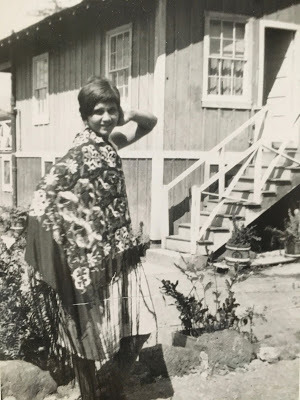 My husband’s grandmother, featured in my new novel THE ALOHA SPIRIT, was an amazing woman. She loved to laugh, and she loved family. Her home was always open to anyone who wanted to be there. I know that if I ever arrived for dinner with ten strangers, she would make room at the table for all of them. That spirit of giving and loving has always embodied the aloha spirit for me, especially after learning of her early life.
My husband’s grandmother, featured in my new novel THE ALOHA SPIRIT, was an amazing woman. She loved to laugh, and she loved family. Her home was always open to anyone who wanted to be there. I know that if I ever arrived for dinner with ten strangers, she would make room at the table for all of them. That spirit of giving and loving has always embodied the aloha spirit for me, especially after learning of her early life. Carmen was born on Kauai in 1915. All that remains of her birthplace now is the U.S. Post Office in Mekaweli. Her parents had emigrated from Spain. In Hawaii, Carmen’s father was a dairyman. She had an older brother, but her mother passed away in childbirth with her third child. When Carmen was still small, her father moved the family to Honolulu. Sometime after that, he decided to take his son and go to the mainland to look for work. He left Carmen with a large Hawaiian family. Her children and grandchildren were never told much about her time with this family, only that she was treated poorly.
As soon as she could, Carmen went to live with her friend, Rachel Galedrige. Rachel had a lot of sons, so Carmen became somewhat of a sister and a daughter. The two women remained friends for the rest of their lives.
When she was sixteen, Carmen married Manuel Medieros, a man she’d met on the beach at Hanauma Bay. Manuel was the youngest child of Joe and Jessie Medeiros, emigrants from Portugal who had eleven children. Joe had left his wife and family, but Jessie owned four houses in the Punch Bowl area of Honolulu. The entire family gathered at Jessie’s house for lunch every day. What a raucous crowd that must have been! Carmen, though, had lived with a large family before. From the Hawaiians, she no doubt learned Hawaiian superstitions and customs just like she learned Catholic superstitions and customs from her husband’s family.
Carmen’s life still wasn’t settled. Her husband had a good job as a power plant engineer for Hawaii Electric, but he had a violent temper. Carmen’s oldest daughter says Manuel abused his wife and became an alcoholic. By the age of 23, Carmen had three daughters. As a Catholic in the 1930s, she could not divorce. Help came from another source.
Earl Rodrigues was her nephew. His mother was Manuel’s oldest sister, which made him close in age to Carmen. He teased her by calling her Auntie, which she said made her feel old. Earl had an irrepressible sense of humor. He was a free spirit who often cut school to surf Waikiki, climbing palm trees to get coconuts to eat, or buying pipikaula, Hawaiian beef jerky. Earl protected Carmen and her daughters, and she fell in love with him.
When Pearl Harbor was attacked in 1941, Earl was at work as a shipfitter. Carmen and the rest of the family watched from their home in the hills of Honolulu as the harbor burned. Carmen must have been frantic for Earl as well as scared for her daughters’ safety. Six months after the attack, Carmen and her daughters left Honolulu for California. They zigzagged across the Pacific Ocean on a Navy ship. Arriving in San Francisco, they lived for a time with Carmen’s brother and his wife. Manuel sold their things in Hawaii and joined them in California a few months later. Those months as a single mother, without the support of the extended family she had in Honolulu, must have been hard. Even so, Carmen must have learned she could manage independently.
Manuel, Carmen, and the girls settled in San Jose. Manuel returned to his drinking and flitted through jobs. After the war ended, family from Hawaii visited constantly. Earl’s parents came to visit with Earl and his siblings. Earl was once more where he belonged, protecting the woman he loved. He built himself an apartment in back of Carmen’s house when the rest of his family returned to Hawaii. They must have discussed a future together, but both were still bound by her marriage vows to Manuel in a Catholic church. Manuel drifted in and out of their lives like another visitor.
I’m going to stop there because to tell you any more would ruin the novel for you! The basic outline of Carmen’s life is all I had to go on when I wrote The Aloha Spirit. My goal was to explore how she could endure constant setbacks yet still emerge with a heart full of aloha. I hope you enjoy her story.

Linda Ulleseit
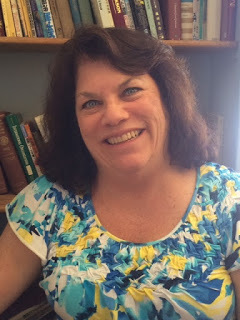
Author of Under the Almond Trees
Coming soon from She Writes Press: The Aloha Spirit
Author Website: ulleseit.com










